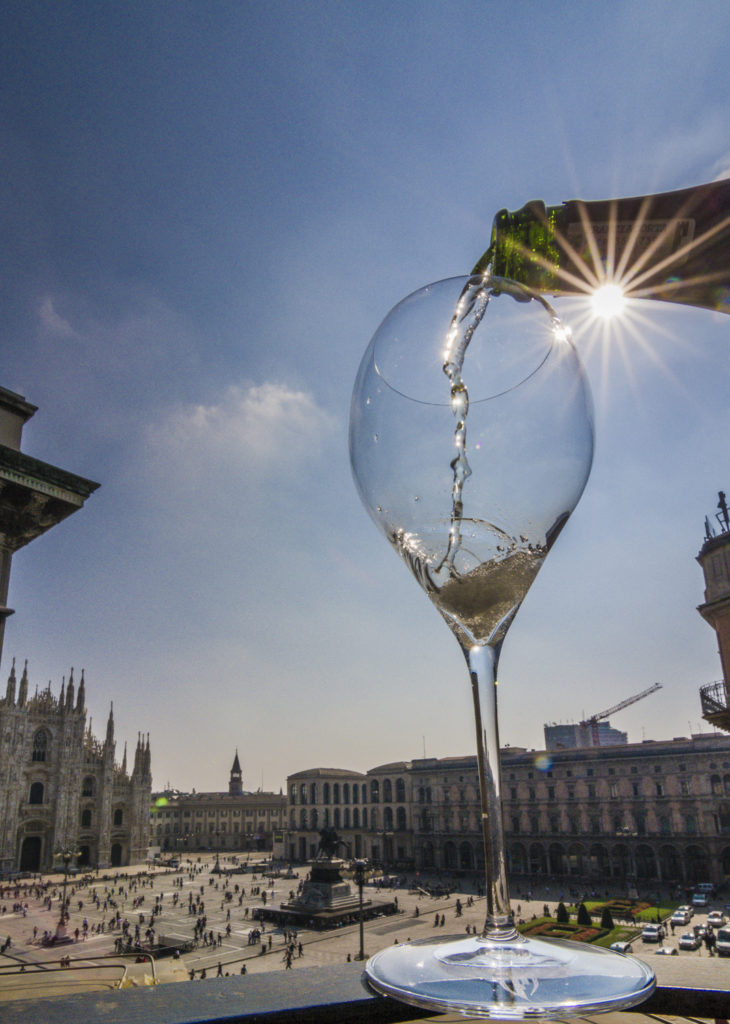As indoor restaurants and other hospitality businesses get ready to reopen from 15 July, Peter Ranscombe ponders some food and wine pairing for a lockdown treat at home.
SOMETIMES a particular grape variety or a style of wine will strike a chord with sommeliers.
Riesling is a classic example; beloved by the trade, but never quite reaching its potential with consumers.
Last summer’s maiden Franciacorta festival in Edinburgh highlighted just how many sommeliers love Italy’s up-and-coming sparkling wine.
Unlike prosecco – which is produced in a tank under pressure – Franciacorta is made in the same way as Champagne, with the second bubble-inducing fermentation taking place in the bottle.
Part of its popularity with wine servers is its affinity for food; while it retains the same characteristic high acidity as Champagne, cremant or other traditional-method fizz, the fact that it’s made in Northern Italy – which is closer to the equator than many other regions – means the fruit is riper.
That ripeness is reflected in the concentration of the flavours in the glass.
It also has a secret weapon – saten.
Sitting alongside the more familiar brut, rosé and vintage styles, Franciacorta’s distinctive incarnation is made from white grapes – mostly chardonnay, but with pinot blanco permitted – and is bottled at a lower pressure, giving it a more gentle sparkle.
That combination of factors has cemented Franciacorta’s plaudits from sommeliers, and has even influenced the shape of its “official” glass, commissioned by the local wine regulator.
It’s shaped more like a wine glass than a traditional flute, reflecting the drinks’ wine-y credentials alongside its sparkling status.

Its potential for matching dishes all the way through a meal has been a recurring theme in this blog over the years and was highlighted when I visited the region back in 2017.
Indeed, matching sparkling wines in general to food throughout a meal has become something of a passion on The Grape & The Grain.
Now, the lockdown has perhaps presented an opportunity to enjoy more restaurant-quality wine at home, with more people splashing out on meals when they can’t head out.
The move into retail by wholesalers like Alexander Wines and Berkmann – which previously supplied restaurants, bars and other on-trade venues – has also given consumers more access to restaurant-quality wines at home.
During an online tasting last week, Silvano Brescianini – the president of the Consorzio of Franciacorta – gave an insight into how the sparkling wine has fared in Italy during its lockdown.
Sales plummeted by 40% year-on-year during the period between March and May, but Brescianini reported a positive turnaround in June, and also heralded the growth in online sales during movement restrictions.
Italians have clearly caught on to the idea of enjoying Franciacorta at home.
With wines like the 2010 Ca’ del Bosco Cuvée Annamaria Clementi Rosé Riserva (€156.99, Xtra Wine; 2009: £139.99, All About Wine), there’s no mystery as to why diners who want to spoil themselves would indulge in Franciacorta.
Ripe strawberry and raspberry aromas are joined by a crunch of damp bark on the nose, before launching into crisp acidity on the palate, balanced by concentrated raspberry and red plum flavours, with a touch of spun sugar on the finish.
It’s dry, it’s savoury and it’s complex – a real treat.
Locals recommend trying it with lake fish like tench, and I’d add salumi to the list, though perhaps not on the same plate.
Risotto is top of the locals’ list when it comes to the Berlucchi 61 Saten (£23.14, Tannico), which sounds admirable to me.
Red apple, apricot and tiny touch of biscuit already developing on the nose lead into much fresher green apple and lemon rind on the palate.
To pair with the 2011 Barone Pizzini Bagnadore Riserva Zero Dosage (£35.18, Tannico), the experts recommend casoncelli alla Bresciana, a form of ravioli.
Zero dosage means no sugar was added before the cork was slotted into place, leaving even crisper and fresher acidity, which will cut through the pasta.
The Barone Pizzini Bagnadore – made at Brescianini’s own winery – was the most “winey” of the online tasting’s sparklers on the nose, with red apple skin, dried apricot and more developed biscuit notes.
Mouth-watering acidity was balanced by more red apple skin and lemon rind, adding to its savoury credentials.
Read more of Peter Ranscombe’s wine and beer, whisky and gin reviews on his drinks blog, The Grape & The Grain.
TAGS

